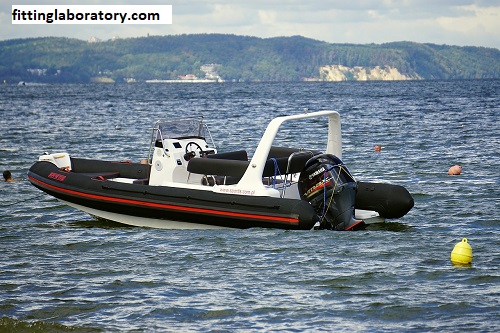Quick Disconnect Fittings: The Complete Guide:
Fittings:
Quick disconnect fittings are also called quick-release couplings. Such fittings are vital components in various industries and applications. This is because quick disconnect fittings allow for simple connection and disconnection of fluid transfer lines. They are an integral component of any operation requiring quick connection and disconnection. The subsequent section talks aboudiscusses of fast disconnect fittings, their benefits, and their applications. Some maintenance tips and FAQs will also be covered.

What are Quick Disconnect Fittings?
Fittings:
Quick disconnect fittings work by providing for easy connection and disconnection of hoses, pipes, and tubes without the use of any tools. They are applied at high levels in hydraulic systems and pneumatic applications, the automobile industries, and others The main reason that quick disconnect fittings have achieved their goal is through the minimization of the leakage and spill hazards when connecting and disconnecting.
Types of Quick Disconnect Fittings:
Fittings:
Quick disconnect fittings can be categorized based on design, application, and the kind of connection provided:
- Push-to-Connect Fittings: They allow a quick connection to be made by pushing the hose or tube into the fitting. The internal mechanism holds the connection securely. It is widely used in pneumatic applications.
- Cam and Groove Couplings: The fittings consist of two halves-one grooved and the other having a cam lever. The joining of both parts results in the locking action by the cam lever. These are applied in industrial sectors for liquid and gas transfer.
- Ball Lock Couplings: The fitting has a ball-locking mechanism, which locks the coupling in place. These are mostly applied in high-pressure situations.
- Type Threaded Couplings: It is screwed for developing a strong connection. They are used in applications where a good seal is required.
- Flanged Fittings: The type of fitting relies on the flange to seal connections. Usually applied in large systems as well as in industries.
- Self-Sealing Fittings: These types of fittings seal the flow automatically when disassembled so that leakage and spills will not happen. They are best applied in applications where fluid containment is critical.
Advantages of Quick Disconnect Fittings:
Fittings:
Quick disconnect fittings possess various advantages which explain their acceptance across various sectors.
- Time-saving: It has the very name by itself, whereby the quick-disconnecting fittings would save an appreciable time because it offers to connect or disconnect at very high speeds during both operation and maintenance.
- Easy Use: In fact, they are prepared in a very user-friendly method. As most of these do not even require a tool for using the fittings; anyone with skills would be allowed to perform his work on the line.
- Safety: Disconnecting quick fittings makes one safe from fluid spills during disconnection. Most designs seal up on their own thereby eliminating spilling of fluid. There is, therefore less exposure to dangers in the working area.
- Versatility: Quick disconnect fittings can come in a variety of sizes, materials, and designs as required for wide usage such as from the automotive to heavy equipment industry.
- Cost-Effectiveness: Though an investment will be made in the beginning, quick disconnect fittings can result in reducing downtime and increasing safety, which will be cost-effective in the long run.
- Durability: Most of the quick disconnect fittings are manufactured from very quality materials that make them very resistant to wear and corrosion, hence they are very long in service life.

Applications of Quick Disconnect Fittings:
Fittings:
Quick disconnect fittings are used in a variety of sectors due to their versatility.
- Food and Beverage: Since contamination can’t happen in food preparation, quick disconnect fittings become self-sealing and hygienic.
- Medical: Quick disconnect fittings are used in medical systems and equipment where safe and sterility connections are required under critical environments.
- Aerospace: Quick disconnect fittings make use in aerospace applications and are found in fuel lines hydraulic systems, and the critical parts where reliability occurs.
- Inspection: Checking through regular inspection, the fitting is free from wear, corrosion, or damage. This could make it malfunction either in cracks or leaks among other features.
- Cleaning: Cleanliness of the fittings, because contamination can easily come with it. Cleaning agents that might react with the materials the fittings are made of are avoided.
- Lubrication: Periodic lubrication may be needed for some fittings to enable them to function properly. You should use the lubricant indicated by the manufacturer.
- Storage: Fittings should always be stored in a clean, dry place whenever you are not using them so that they are not destroyed or contaminated.
- Replacement: Any fitting showing excessive wear and tear or damage should always be replaced immediately to avoid potential leaks and failures.
Frequently Asked Questions (FAQs):
Fittings:
1. What are some of the materials used for manufacturing quick disconnect fittings?
Quick disconnect fittings are made of stainless steel, brass, plastic, and aluminum. The material to be used will depend on the application and the fluid being transferred.
2. Are quick disconnect fittings offered by various manufacturers that can be interchanged between brands?
While most quick disconnect fittings have standard sizes and designs, it is best to refer to the manufacturer’s specifications. Not all fittings are interchangeable, especially when they have different designs or pressure ratings.
3. Does the quick connect include use in a high-pressure application?
Yes, for most pressure applications you can get quick connector fittings and quick connectors. Pressure needs may make choosing appropriate fitting or quick connect selection significantly.
4. How can I determine which sizing is correct for my fitting?
Determine the correct size by measuring the diameter of the hose or pipe and consult the manufacturer’s sizing chart. Additionally, consider the type of connection you will need for your application.
5. What do I do if a fitting leak?
If a quick disconnect fitting is leaking, turn it off and disconnect it immediately. Check for damage and replace any worn or damaged parts. Be sure that the fitting is seated correctly before reconnecting.
6. Do all types of fluids come into contact with quick disconnect fittings?
Although many quick disconnect fittings are versatile, they don’t all work for all fluids. Always confirm the fluid compatibility of a connector, especially in chemical or food applications.
7. How can I make sure a connection is leak-proof?
It should be installed along with the manufacturer’s instructions on leak-tight connection. The fittings should be regularly checked, maintained, and kept clean of debris.

Conclusion:
Fittings:
Quick disconnect fittings represent the very essence of efficiency and safety for many industries. Easy to use, versatile, and reliable, they play an indispensable role in fluid transfer applications. Knowing the type, advantages, applications, and maintenance needs of these fittings can help users benefit most from them. Be it automotive, hydraulic, pneumatic, or food processing applications, quick disconnect fittings remain a cornerstone of efficient fluid management.